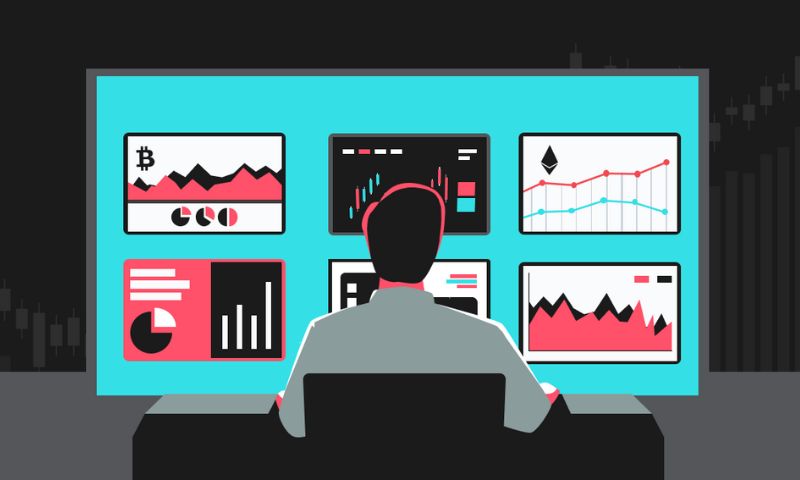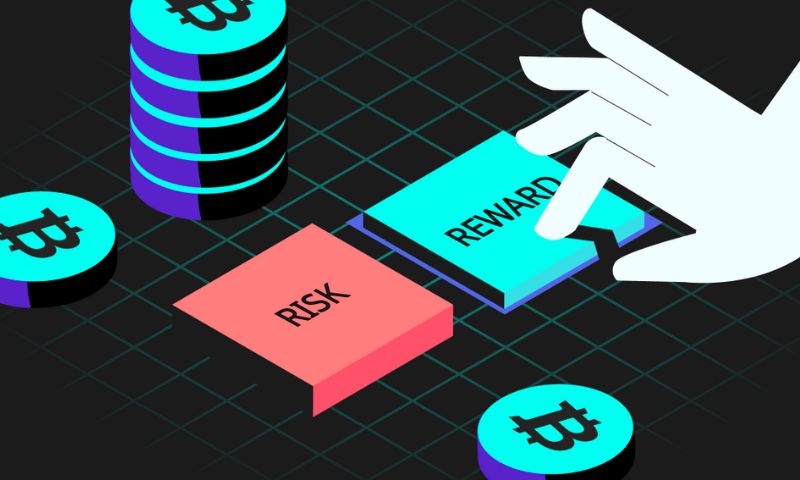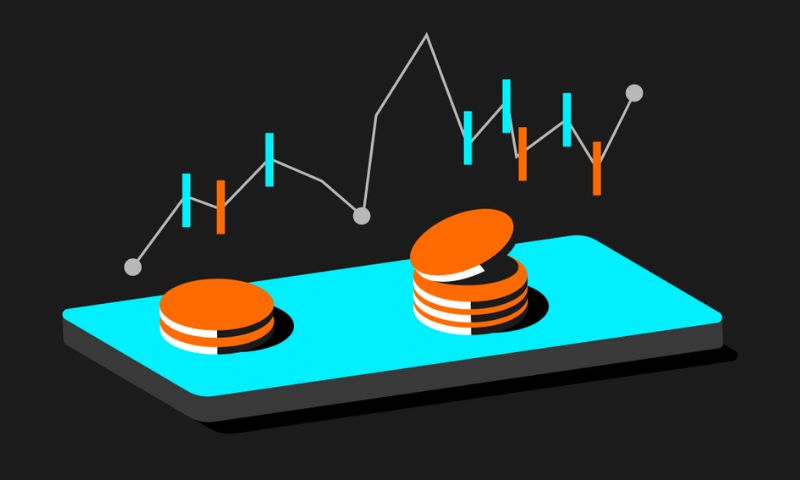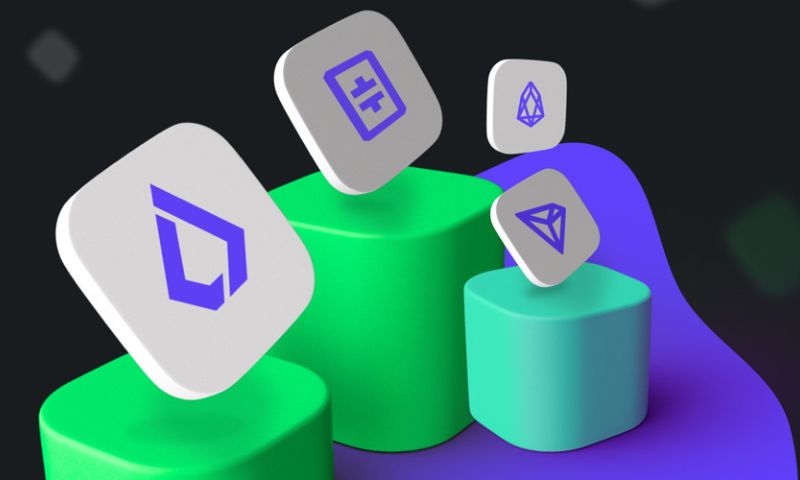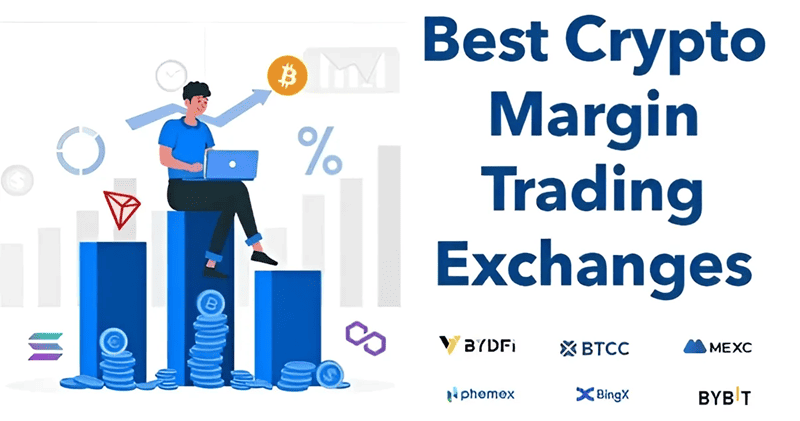Crypto Margin Trading Explained: Navigate the Hazards Like a Pro
Dive into the deep end of crypto and you’ll find margin trading—an arena where the stakes are as high as the potential gains. But with great power comes great responsibility, and that’s why understanding the risks of crypto margin trading is crucial. Get ready to grasp the essentials and learn how to swerve the pitfalls. This isn’t just about playing the game; it’s about playing it smart. Let me be your guide to mastering the art of margins and taking control of your crypto journey. Buckle up, because it’s one thrilling ride you don’t want to miss!
Grasping the Basics: Defining Crypto Margin Trading
Comprehending Leverage and its Implications
Let’s dive into the deep end of crypto trading on margin. You might hear the word “leverage” a lot. Simply put, it’s like a power-up for your trading ability. It lets you trade more money than you have. This can mean bigger wins but also bigger losses, so you need to use it smartly.
Using leverage in cryptocurrency is common in high-risk trading strategies. Think of it as a loan for trading. If you’re sure about a trade, leverage can boost your possible earnings. But, if the market goes against you, you might face potential losses with crypto leverage. This is because the more you borrow, the more you can lose.
Initial and Maintenance Margin Requirements
When you start, you’ll deal with something called an initial margin requirement. It’s the part of the trade value you need to have as your own money. This is what keeps the trade going. There’s also the maintenance margin to know about. It’s like a safety net that stops your losses from going too far. If your trade value falls too much, you can get a margin call. This means you need to add more money to keep the trade alive.
Think of margin lending for cryptocurrencies as putting down a deposit. You put in a bit, and the lender covers the rest. But, if the trade doesn’t go well, you could lose your deposit and maybe more. This is where understanding crypto collateral requirements is key. It’s the stuff you use to secure the loan, like digital currency.
Remember, in crypto margin trading platforms, if the trade goes wrong, you can face liquidation risks in digital currency. That’s when your collateral is sold off to pay the debt. So, you have to be careful about the volatility of crypto markets. Price swings in margin trading are normal, but they can be tough when using high leverage.
Always be aware of the consequences of margin trading. High leverage can lead to excessive leverage consequences, like losing more than you put in. And remember, terms like leverage ratio in Bitcoin trading simply refer to how much you’re amplifying your trade.
Now, why does this matter to you? Because knowing this is your first step to becoming a savvy crypto margin trader. It’s your money on the line, after all. Markets go up and down – that’s their nature. By managing debt in crypto trading, you help protect yourself from these wild swings.
Take interest rates on crypto loans, for example. They’re like the price tag for borrowing. They can add up. So, you want to be sure your trades can handle those extra costs. Creditworthiness in crypto margin trading comes from proving you’re good for the money.
To sum it up, the basics of crypto margin trading lay the groundwork for smarter, more confident trades. Understand the power and the perils, and you’re setting yourself up for better chances of success. Remember, it’s not just about big wins – it’s about staying in the game.
Identifying the Risks: The Perils of Leverage in Crypto
Understanding Liquidation Risks and Market Volatility
Ever seen a roller coaster? Crypto trading on margin is one, but with real money at stake. High-risk trading strategies like this can lead to large wins or big losses fast. It’s like borrowing money to invest more, but you also amplify potential losses with crypto leverage. This means if prices fall, you could owe more than you put in.
In simple words, leverage in cryptocurrency is powerful. It can turn a little money into a lot. But the markets move fast and hard. When they do, liquidation risks in digital currency come into play. Liquidity means how easy you can turn assets like Bitcoin into cash. Market dips can force you to sell your coins at low prices to pay back the loan. This happens without warning, and it’s called automated liquidation in crypto trading.
The Mechanics and Impact of Margin Calls
Now, let’s talk about margin calls explained. A margin call is like a warning. It says, “You need to give us more money, or we’ll sell your assets!” Think of it as a call to action before things get worse. Crypto margin trading platforms will demand this if your account value drops below a certain point. This is the maintenance margin in cryptocurrency.
You might ask, “What’s the risk if I don’t meet a margin call?” Well, if you don’t add more money or assets to your account, the platform will sell your holdings, often at the worst time. This can lead to massive losses and could wipe out your investment.
Understanding crypto collateral requirements is crucial too. Collateral is what you offer to secure the loan. But as prices swing, this security can be easy come, easy go. If you can’t keep up, high leverage can turn into excessive leverage consequences.
Sadly, managing debt in crypto trading isn’t a walk in the park. The interest rates on crypto loans can be steep, adding to your burden. You must always be ready for price swings in margin trading, as they can happen anytime in this always-open market.
Creditworthiness in crypto margin trading isn’t talked about much. But guess what? It’s still important. Platforms look at your history and might limit how much you can borrow. The higher the leverage ratio in Bitcoin trading, the more closely they watch.
Finally, let’s touch on the consequences of margin trading and default risk in leveraged trading. Not able to pay back what you borrowed? It can harm your credit on the platform and make it harder to borrow in the future. And if the platform takes a hit because folks can’t pay back loans, it could affect their ability to lend or even stay open.
In crypto, what goes up must come down — sometimes hard and fast. It’s crucial to know your stuff and never borrow more than you can pay back. It’s not just about winning big; it’s about staying in the game.
Managing the Risks: Best Practices in Margin Trading
Constructing a Risk Management Strategy
When you start crypto trading on margin, you play with fire. It heats up fast. A smart risk management plan saves you from getting burned. To trade well, you need to know your limits. What can you afford to lose? Decide this before jumping in. This is your line in the sand. Cross it, and trouble often follows.
Get to know leverage in cryptocurrency. In simple terms, it’s like a loan for your trade. More leverage brings more risk. Imagine borrowing ten times what you have. A small win turns big. But a small loss? It digs a much deeper hole. High-risk trading strategies tempt you with big wins. But they can also lead to big, fast losses. Always keep that in mind.
Liquidation risks in digital currency are high. Markets move fast. The value of your trade can plunge. You might have to add more funds quickly or get cut from your trade by the platform. This is when people lose their shirts. Limit this by starting with less leverage. Leave room for those wild market swings.
In the thick of it, a margin call can happen. It’s a warning signal. Your trade hits a danger point and the exchange wants more cash or crypto. You must act fast. If not, you say bye-bye to your trade. Margin calls explained simply: Stay alert, or pay the price.
The Role and Proper Use of Stop-Loss Orders
Stop-loss orders are your best friend in margin trading. They lock in the price to sell before things get nasty. Say you buy Bitcoin with margin. You expect it to rise. But just in case it falls, you set a stop-loss. This move can prevent a small slip from becoming a nosedive.
A stop-loss order is like an emergency brake. It’s automatic. It can save you from huge, sleep-wrecking losses. But, you have to set it right. Too close to your buy price, and a normal dip can boot you out of your trade. Too far, and you might lose more than you can handle. Find that sweet spot.
Mind the interest rates on crypto loans. They eat into profits. Always check them before you dive in. Rates can change, often based on market demand.
Creditworthiness in crypto margin trading affects your terms. Build a strong trading record. You can get better rates and terms.
Remember, default risk in leveraged trading is real. If values tank and you can’t cover the loan, your credit takes a hit. That makes future trading tougher.
Keep these tips close. Trade with care and a cool head. This way, you’ll navigate the risks of margin trading like a pro.
Regulatory Considerations and Market Dynamics
Navigating Regulatory Challenges in Crypto Margin Trading
In crypto trading on margin, rules matter a lot. Picture this, you’re on a boat in the middle of the ocean. Waves represent the market’s volatility, and the compass is the law. To stay afloat and reach shore safely, you must follow the compass carefully. That’s how crucial regulatory aspects of crypto leveraging are.
Every place has its own crypto rules. What’s okay in one place might be a no-go elsewhere. So, always check the local laws first. Ask yourself, “Can I legally trade crypto on margin here?” If yes, you need to understand the rules. These can include how much you can borrow and how to report gains or losses.
Trading crypto with leverage means borrowing money to bet big. But borrowing comes with interest rates on crypto loans. The rates change and can surprise you. They affect how much you end up owing. So, you’ve got to keep a close eye on them.
Creditworthiness in crypto margin trading is another rule to know. Think of it as a trust score. Platforms check if you’re good for the money before letting you trade big. Just like a bank looking at your history before giving you a loan.
Now, always remember these rules can change fast. When they do, they can affect your trades in a big way. Sometimes, new rules can come out of nowhere. If that happens, you could need to put in more money or close your trade fast.
Comparing Margin Trading with Spot Trading and its Effects on the Market
Now, let’s talk about margin trading vs spot trading. Say you’re playing a game. Spot trading’s like paying for your game upfront. You own it, no strings attached. Margin trading’s like borrowing money to get a bigger, better game. But if you can’t pay back, the lender takes your game away.
In spot trading, you buy crypto with money you have. Simple. No borrowing, so no debt. But in margin trading, you borrow to buy more than you can afford. You’re aiming for higher wins. But losses can hit just as hard, or harder.
When prices swing big time, spot traders see less drama. Their coins are worth more or less, but that’s it. Margin traders feel those swings much more. Price goes up, and they’re kings. Price drops, and they could lose it all, fast. It’s because they use borrowed money.
If prices fall too much, traders get margin calls. It’s like a game-over warning. You need to put in more money or let go of your crypto. Some traders can’t add money in time. That’s when liquidation kicks in, and they lose their digital cash.
I can’t stress this enough: betting big can lead to big falls. High-risk trading strategies in volatile crypto markets are like tightrope walking without a net. Super high or even excessive leverage can wipe you out in a flash.
Remember, trading with leverage is not just about big wins. It’s playing with fire. If you don’t respect the fire, you’re bound to get burned. Always have a plan, know the rules, and trade smart. Stick to these, and you can navigate the stormy seas of crypto margin trading like a pro.
Alright, let’s wrap this up. We’ve gone through the nitty-gritty of crypto margin trading, from leverage basics to facing nasty margin calls. It’s a game of high stakes – with the right moves, you could win big but remember, one wrong step and your wallet takes a hit.
We talked about how to play it safe: build a solid risk strategy and use stop-loss orders to protect your cash. The market’s wild, and regulation’s still catching up, but if you’re smart, you can use these ups and downs to your advantage.
Margin trading’s not just a buzzword; it’s serious business that can mess with the whole market. Staying sharp and keeping your head cool can set you apart from the crowd. Stay informed, play it wise, and happy trading!
Q&A :
What is crypto margin trading and how does it work?
Crypto margin trading is a method of trading assets using funds provided by a third party. In the cryptocurrency market, traders use margin to leverage their positions, essentially borrowing money from a broker to trade larger amounts of cryptocurrencies. When margin trading, traders must commit a percentage of the total order value themselves, known as the margin. The practice amplifies both gains and losses, which means the potential for higher profits, but also the risk of significant losses.
What are the potential risks associated with crypto margin trading?
The potential risks of crypto margin trading include amplified losses, liquidation risk, and market volatility. Because margin trading involves leveraging one’s position, if the market moves against the trader’s position, the losses are increased relative to the amount borrowed. Additionally, if the value of the held cryptocurrency falls below a certain threshold, the trader’s position could be liquidated by the broker to cover the loan, resulting in the loss of all the trader’s initial capital.
How can a trader mitigate the risks of trading on margin with cryptocurrencies?
To mitigate the risks of trading on margin with cryptocurrencies, a trader should start with a clear understanding of the market, only trade with surplus funds that they can afford to lose, implement strict risk management strategies, use stop-loss orders to limit potential losses, and constantly monitor the market, as cryptocurrencies are known for their volatility. Additionally, traders should continuously educate themselves on market trends and margin trading techniques.
Is crypto margin trading recommended for beginners?
Crypto margin trading is usually not recommended for beginners due to its complex nature and the high risks involved. Novice traders might find it challenging to navigate the volatility of the cryptocurrency market, and the use of margin can exacerbate potential losses. It is advisable for beginners to gain experience with standard trading practices and fully understand the risks before considering margin trading.
What are the consequences of a margin call in cryptocurrency trading?
A margin call occurs in cryptocurrency trading when the value of the trader’s account falls below the broker’s required minimum value, known as the maintenance margin. When a margin call happens, the trader is required to add more funds to their margin account to meet the minimum margin requirement or sell off positions to cover the shortfall. If the trader cannot fulfill the margin call, the broker has the right to liquidate the trader’s assets to bring the account back to the minimum value, which can lead to a significant financial loss for the trader.

